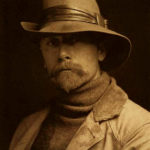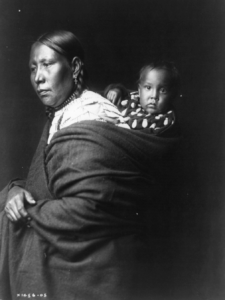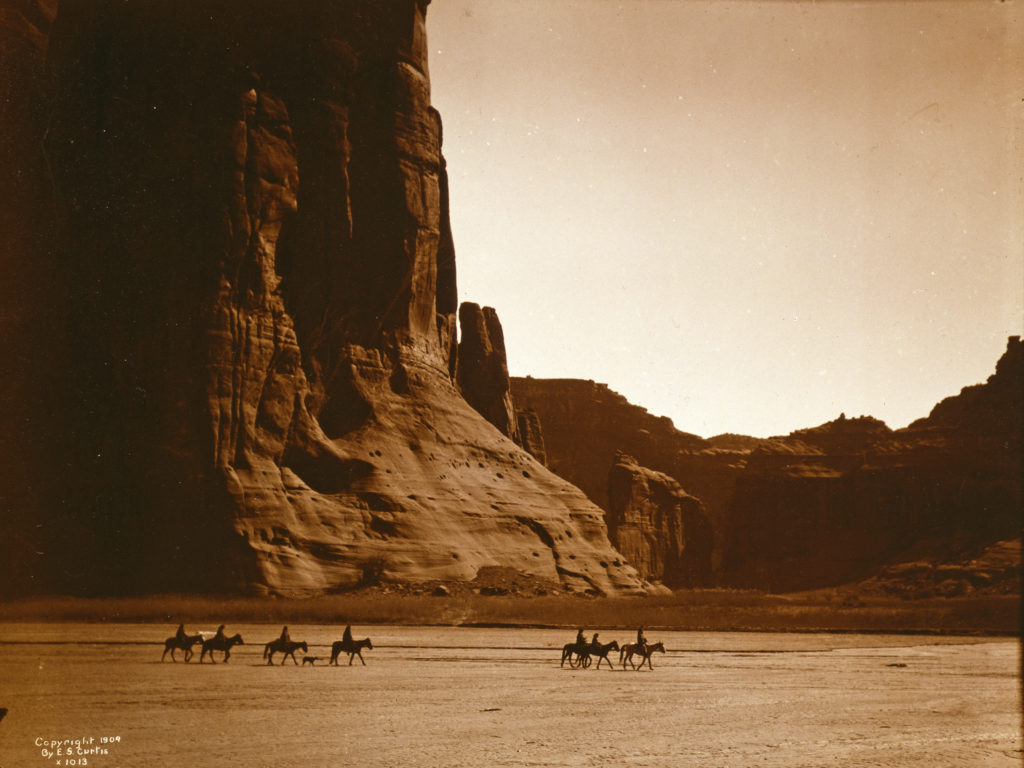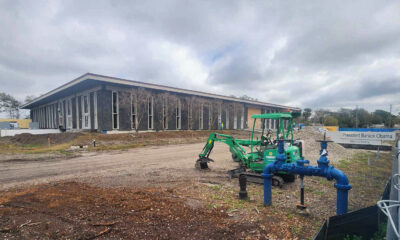Create
Native American photography on view at the James Museum

Just shy of its first anniversary, the James Museum of Western and Wildlife Art hits one out of the park with The Cultural Connections of Edward S. Curtis, opening Saturday. It’s the third special exhibition for finance magnate Tom James’ specialty museum, but the first one to adhere perfectly to the venue’s mission, as well as to advance it historically: To showcase the wide variety of artistic works that depict or deal with the Old West, cowboy culture and the culture of indigenous American peoples.

Edward S. Curtis, self portrait, ca. 1899.
Edward S. Curtis was a photographer in the latter years of the 19th century – when the medium was in its infancy – and the early part of the 20th. His fascination with and respect for native people, combined with a relentless drive and innate artistic sensibility, led to some of the most enduring photographic works of the time period.
The Cultural Connections of Edward S. Curtis includes more than 70 photographs, on loan from the Robb and Susan Hough collection. It will be on view at the James through July 21.
Curtis, a Wisconsin native, was most prolific throughout the first three decades of the 1900s. At the very turn of the century, he participated in the 1899 Harriman expedition to Alaska as the lead photographer, and next created a stunning series of images of the Blackfoot Confederacy’s Montana tribes.

Mother and Child, 1905
Curtis’ enduring life’s work was the 20-volume The North American Indian. Consisting of more than 700 large portfolio images, more than 1500 volume size images and 7,000 pages of text, this “ethno-photographic masterwork” preserved for history images of tribal life and societies that would soon be gone forever.
In his lifetime, Curtis – known colloquially as “The Shadow Catcher” – photographed more than 70 American tribes. He favored a romantic style, sometimes setting up scenes that he knew who appeal to the curious public of his era, but today his work stands as some of the most alluring, as well as historically important, visual artifacts of Western American life.
At 2 p.m. April 6 (opening day of the exhibition), leading Curtis authority Christopher Cardozo will present An Enduring Legacy: Edward Curtis’ Beauty, Heart, and Spirit. Author of nine books and curator of more than 100 exhibitions in 42 countries on six continents, Cardozo is devoted to the promotion, exhibition, publication and study of the photographer’s life work.
“Curtis’ photographs of native people are unique in many ways and on many levels,” Cardazo said in an interview with history.net. “First and foremost, they are the result of a highly collaborative, co-creative endeavor. Even a superficial inspection reveals the native people were critical participants and co-creators. They were as committed as Curtis to creating this record that would become, in many cases, the only record their descendants would have of what they looked like, who they were and what they believed in.

Two Moons, 1910
“In many of Curtis’ finest portraits one sees an intimacy, vulnerability and intensity of involvement on the part of the native participants that simply does not exist in any depth or consistency in the work of any other photographer of the American Indian. There have been thousands and perhaps tens of thousands of photographers who photographed the American Indian, yet rarely do we see other photographs of native people that combine such aesthetic sophistication, vulnerability and beauty of object. “
Three more programs – all free with regular admission – are planned for the next month in conjunction with the special exhibition:
Saturday, April 13, 10:30 a.m.-12:30 p.m.: Family Day: Fun with Sun Prints. Explore the world of photography and learn how to create your own sun print in our children’s studio. Best for ages 3–10; children must be accompanied by an adult.
Thursday, April 18, 11 a.m.- 12:30 p.m.: Book Club: Short Nights of the Shadow Catcher: The Epic Life and Immortal Photographs of Edward Curtis, by Timothy Egan.
Tuesday, May 7 at 6, 6:30 & 7 p.m.: Guided Tour: Spotlight on Edward S. Curtis. A 30-minute tour focused on the life and work of Edward S. Curtis.

Canyon de Chelly, Navajo, 1904







